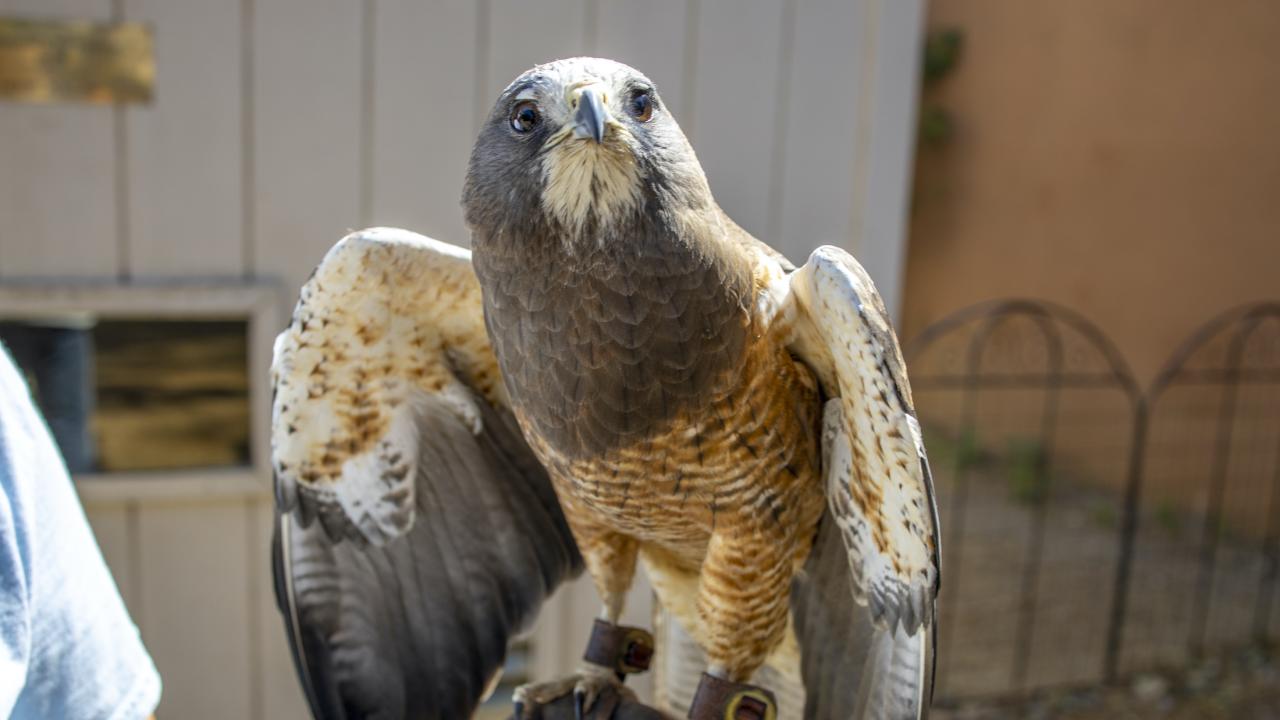
Chlamydia Infections Documented in Raptors
Caution Urged in Handling Raptors in Rehabilitation Centers
As colder weather arrives in California, UC Davis researchers urge wildlife rehabilitators and veterinary professionals working with raptors to take extra health precautions against a Chlamydia strain found in several species that might potentially cause serious disease in humans as well.
In a recently published PLOS One study, Dr. Michelle Hawkins and colleagues documented the prevalence of Chlamydia buteonis in raptors admitted to five wildlife rehabilitation centers in the state over a one-year period. Infection cases were estimated for each center and potential risk factors associated with infection were evaluated, including location, species, season, and age class.
While the researchers found very little incidence in Southern California, Northern and Central California appears to be the hot spots, said Hawkins, who serves as director of the school’s California Raptor Center (CRC)—one of the study sites. This chlamydia strain was found particularly in red-tailed and Swainson’s hawks, although other species (owls, vultures) were also impacted. The incidence of infected birds coming into the centers was highest in the winter months.
While some birds infected with chlamydia don’t show many outward signs of illness, they may not be flying, or have other non-descript signs of not doing well such as not eating/drinking. Clinical signs of the disease can resemble West Nile virus, but occurs during the wrong season.
Not only can raptors transmit the virus to other birds in a wildlife rehabilitation facility, they could possibly transmit to humans via aerosolized particles. Symptoms in humans affected by another chlamydial organism, Chlamydia psittaci, resemble the flu and in severe cases may lead to hospitalization. In some cases, patients end up in the intensive care unit and, in the worst cases, can cause death.
“In part, that’s why we wanted to get this paper out to bring greater awareness of the disease to people working with raptors in California,” Hawkins said. “While it is unclear whether this specific Chlamydial organism is zoonotic, many of the organisms in this group are zoonotic and thus caution should be taken until more data are available. Some infected people could think they have the flu, but they need proper medication and care in order to overcome this bacterial infection.”
Hawkins knows all too well how this zoonotic disease impacts humans. She contracted a nasty case of Chlamydia psittaci from a parrot patient approximately 20 years ago while working as a veterinary resident. She experienced a high, cycling fever and initially thought she had the flu. After a trip to the emergency room and finally convincing a doctor she needed antibiotics, Hawkins recovered.
One of the most concerning findings of the study, Hawkins said, is that Swainson’s hawks are a species of concern for California and are considered threated due to loss of nesting habitat. She’s concerned that this could place another strain on their population levels.
“We don’t yet understand what makes a bird get sick from this chlamydial infection,” Hawkins said. “We need to better understand co-morbidities. The next step is to publish a clinically-oriented paper for rehabilitation centers to be better aware of the symptoms.”
For now, Hawkins urges those centers and anyone handling raptors to look at their biosecurity practices to prevent passing the disease along to other birds in the same facility. People working with these birds should wear at least masks and gloves as extra precautions with species most impacted, especially during the winter months. Ideally, they should also use a disposable gown or white coat that can be washed after use.
The CRC uses dedicated gloves for their resident ambassador birds, and new disinfection protocols for cleaning gloves between rehabilitation birds and any other equipment that may be used between them.
“I hope this publication informs intake protocols for wildlife centers in California and on the West Coast,” Hawkins said. “We need to take precautions from passing it along to any other animals and from catching the disease ourselves.”
